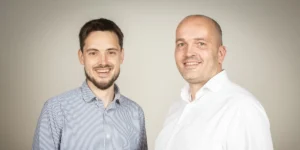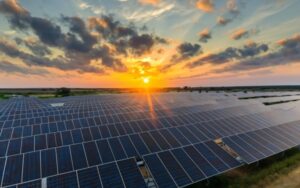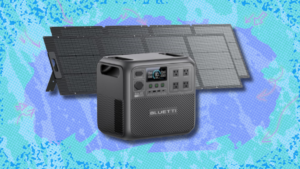Controversial green hydrogen to e-methane pioneer TES raises €140m in latest funding round

Belgian start-up Tree Energy Solutions (TES) — which plans to produce e-methane from green hydrogen at scale — has raised €140m in its latest fundraising round, despite concerns over the viability of its core business model and its reliance on multiple subsidies.
The new cash injection — much of which came from existing shareholders — will be used to help develop the company’s global portfolio of projects, including its import terminal in Wilhelmshaven, northern Germany.
TES plans to produce and sell carbon-neutral synthetic methane — what it calls e-NG, or electric natural gas — in a six-step process:
- Generating wind and solar power in the world’s sunniest and windiest locations;
- Using that renewable energy to produce green hydrogen via water electrolysis;
- Combining that H2 with “recycled CO2” to produce e-NG using the energy-intensive Sabatier process;
- Shipping, storing and distributing that e-NG using existing gas infrastructure (as it is chemically identical);
- Delivering e-NG directly to customers;
- Capturing and recycling CO2 from the e-NG to produce more e-NG in a closed loop.
So it plans to produce e-NG in the US, Canada, Germany, the Middle East and Australia, with a view to exporting that “green gas” to demand centres such as Europe and Japan — even though such transportation would almost certainly emit significant quantities of CO2.
It also plans to capture carbon dioxide at power stations where the e-NG is used — even though none of them currently have CO2 capture facilities, and that 100% CO2 capture from flue gas would be impossible — and transport that carbon dioxide back to where the “green gas” was originally produced for “recycling” — again, with added CO2 emissions expected.
If this all sounds like the resulting e-NG would be extremely expensive, it’s because it probably will be. But TES CEO Marco Alverà told independent energy analyst Michael Liebreich last year that it can work financially because of the multiple subsidies that the company could reap.
Article continues below the advert
“There is a lot of money there to be made in layering all the different subsidies, so you get a subsidy for capturing the CO2, you get a subsidy for producing the renewables, you get a subsidy for producing the hydrogen, and guess what, you can export that molecule, so we may even be able to get additional subsidies in Europe [via, for instance, the H2Global scheme],” Alverà — the charismatic former CEO of Italian gas distributor Snam — told Liebreich on the latter’s Cleaning Up podcast.
Offtakers in Europe would be willing to pay more for e-NG than standard natural gas, if the EU’s carbon price makes it cheaper than the fossil fuel.
Liebreich countered in an essay that this business model is unsustainable, with governments unlikely to be happy to pay subsides for renewables and green hydrogen production for a product that will ultimately be shipped overseas.
However, TES is almost guaranteed significant income from its Wilhelmshaven import terminal, which will, at least initially, import liquefied natural gas (LNG) to Germany.
Last month, German regulator BNetzA granted the project a 20-year exemption from open-market regulations, allowing TES to market up to 90% of the import capacity (ie, the amount of LNG it can unload from a ship, store and regasify for delivery to market) on a long-term basis and at “pre-determined tariffs”.
So the company could quite easily turn a profit simply by importing fossil gas, without ever producing e-NG.
Liebreich tells Hydrogen Insight that if the planned “layering” of subsidies is not allowed, “not a single unit of e-methane will ever be unloaded at TES’s Wilhelmshaven terminal”.
“But they would still have a valuable asset — brown not green, but perhaps that’s the goal all along.”
TES plans to also produce green hydrogen and green power at Wilhelmshaven, while also exporting CO2 from there as part of its “recycling” goal.
Its latest round of fundraising — its third — attracted “a global investor base comprising leading financial institutions and energy investors, including Azimut Group, Fortescue, E.ON, HSBC, O.G. Energy, Zhero and others”, the company said in a press release.
Investment also came from existing shareholders, including Brussels-based investor AtlasInvest, Dutch investor Reggeborgh and London-based ship operator Zodiac Maritime.
“The fundraising is an important step on our journey to deliver affordable e-NG and hydrogen,” Alverà stated in the press release.
“This newly raised capital will be used to advance the development of our upstream and downstream e-NG projects internationally. Our sustainable business model has attracted world-class strategic and financial partners to continue executing on our projects.”
TES already has developed strategic partnerships with TotalEnergies, Osaka Gas, Toho Gas, Tokyo Gas, Fortescue and Abu Dhabi oil company Adnoc.






